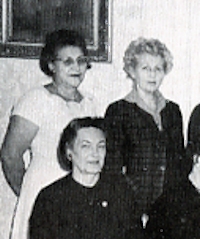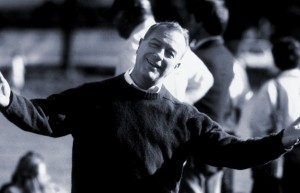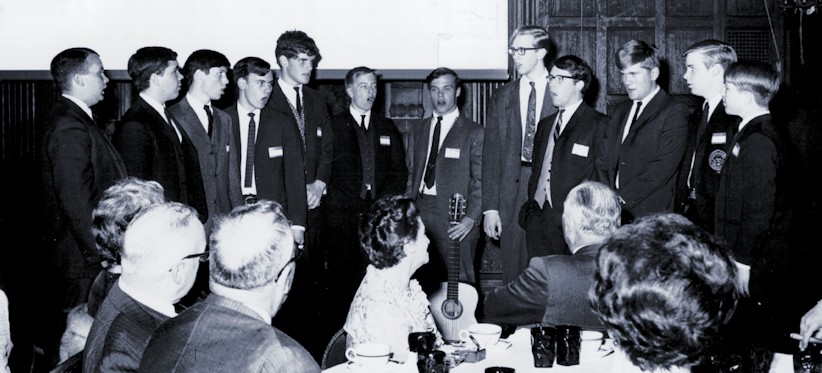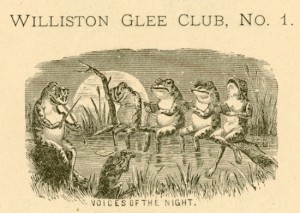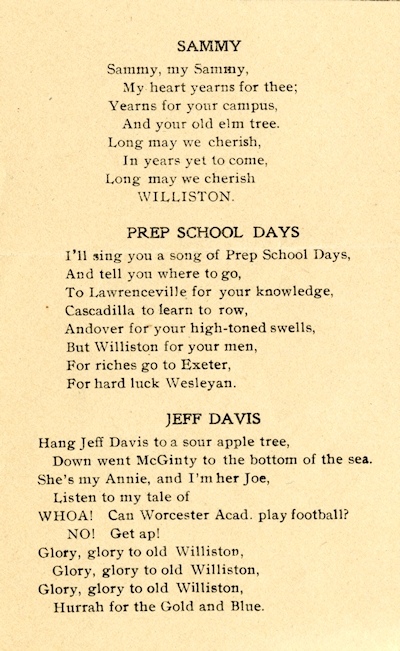(Note: this article was originally posted on December 23. In the ensuing five days, new information came to light, notably (see the comments at bottom) concerning the year “Christmas Soup” was introduced at Williston, resulting in this revision, posted December 28, 2017. — RT)
A couple of years back a comic arrangement of “The Twelve Days of Christmas,” performed by a certain a cappella ensemble from Indiana University, had a sudden surge of popularity. Apparently unbeknownst to them — despite the presence of the author’s signature on the last page of the score — the “Twelve Days of Christmas” parody was sung by the Williston Academy Caterwaulers of 1967-68. It was composed by their director, longtime (1961-2004) Williston fine arts teacher Richard Gregory. Dick founded the Caterwaulers in 1965, as an evolution from the former Double Quartet, long attached to the Glee Club. The name is a play on the school’s “Wildcat” mascot, and a line from the English version of a once-popular Haydn vocal catch, “You caterwauling rogues, be gone.”
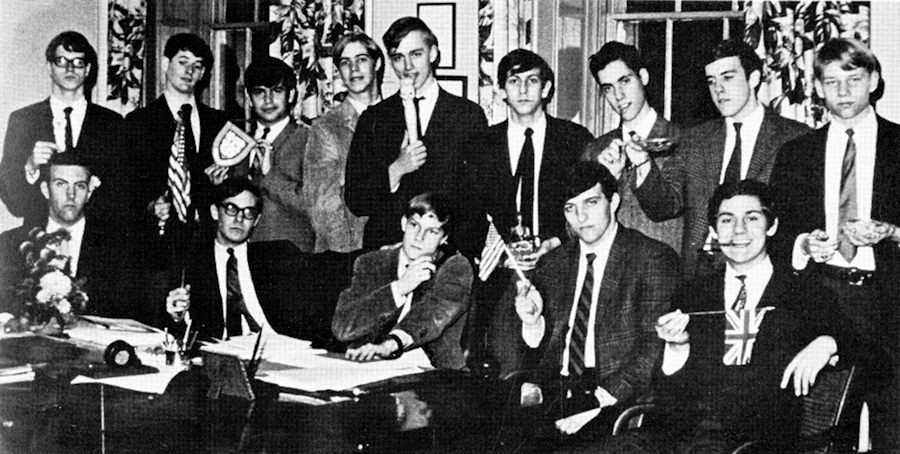
“Christmas Soup” (the real title of Dick’s arrangement) stayed in the Caterwaulers’ repertoire for nearly three decades. Dozens of former Caterwaulers went on to college singing groups. Many took copies of Caterwauler arrangements with them, well within the collegiate a cappella tradition that also brought arrangements by the Baker’s Dozen and Whiffenpoofs — Dick’s groups at Yale in the early 1950s — into the Caterwaulers’ repertoire. “Christmas Soup” was actually performed and even recorded, with proper attribution, on multiple occasions around the country before Straight, No Chaser picked it up. And to their credit, they now perform it (I am told) with appropriate acknowledgment of the author.
But, Dick Gregory points out, “Christmas Soup” didn’t originate with the Caterwaulers. From 1957-1960, Dick was a lieutenant in the United States Navy. For most of that time, he was stationed on Guam, where he created “Christmas Soup” for a group of his fellow officers. Since they were members of a communications unit, they called themselves the “Seven Nicators.” They stuck with that until three of their members were rotated out, and the remainder deemed the name inappropriate for a quartet. Dick made some minor revisions for the Caterwaulers, but only the ending was new.
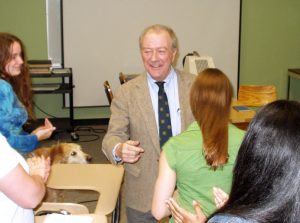
Straight, No Chaser’s performance breaks off abruptly and segues into “Christmas in Africa.” I once found this baffling, until I came across a recording by a group from Ball State University, also in Indiana, that shifts gears in exactly the same place. Suddenly, all was clear: the copy of the music that was being passed around between Bloomington and Muncie was missing the final page. And that’s why no one there knew that Dick had written it, or when.
At a Williston Alumni Reunion in June, 2009, a large gathering of former Caterwaulers got together to rehearse and perform “Christmas Soup” and a number of other favorites. If the following video lacks the polish of more professional renderings (and I can’t help noting that it sounds pretty good for a bunch of underrehearsed old guys), it has the distinction, not to mention authenticity, of including several of the singers who originated it, and Dick Gregory himself directing. You can’t get more authentic than that!
For the record, “Christmas Soup,” a.k.a. The Twelve Days of Christmas,” with the ending as sung in the preceding video, is copyright ©1967, Richard C. Gregory.
On behalf of all of us at Williston Northampton, happy holidays!


